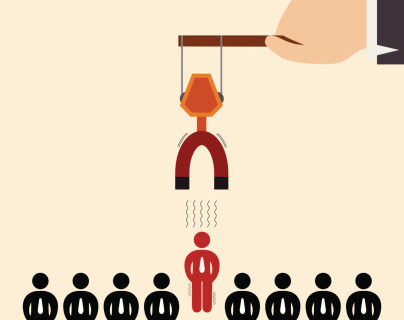Greg Rowland
In 2005, The Semiotic Alliance created ‘Euphoria,’ a billion-dollar fragrance brand for Calvin Klein. It’s still by far their most successful brand — a billion dollars is a very conservative estimate.
It’s a nice example of what we can do when we’re truly unleashed on the world, given an open brief with a direct mandate to be creative and inspirational rather than simply analytical. You can’t get the former without the latter, of course, but since 2008 semiotics has, like much of the research business, been cauterised towards evaluation as an end in itself. Sometimes we’ve been called upon to evaluate evaluations, guiding clients towards a better shade of ‘Green’ in their Millward-Brown advertising research scores.
We came to this project during the period when the Calvin Klein fragrance brand was owned by Unilever. Our combination of cultural theory and creativity had given us a good measure of credibility as agents of progression. We’d helped successfully launch Axe in the US and had created the ‘Phoenix,’ ‘Voodoo,’ and ‘Pulse’ variants. ‘Phoenix’ is still on-shelf in many markets today, more than 15 years since launch.
Courage was needed. In 2005, the Calvin Klein fragrance brand was limping towards exhaustion. We were told that the new proposition was the brand’s last chance. If this didn’t work out, Calvin Klein fragrances faced an inglorious sunset. We were surprised. How could the brand that had launched ‘Obsession’ and ‘Eternity’ have gone so badly wrong?
The answer was relatively simple: Calvin Klein had forgotten what it was. ‘Obsession’ and ‘Eternity’ were bold, uncompromising, and highly successful, introducing new and distinctive ideas into the sector. In the late ’80s, ‘Obsession’ had pioneered a hugely disruptive approach to communications — the brand was charged with a discomforting erotic energy, expressed through the filmic codes of Swedish Modernism. Calvin Klein had channelled the spirit of Ingmar Bergman in the service of fragrance.
Nothing, before or since, matched the brand’s communication of nervous NYC love-kvetching, painted on the most austere, experimental — and some would say highly pretentious — landscape of Bergmanesque existential nausea. The early-’90s follow-up, ‘Eternity,’ was similarly innovative and disruptive, adapting by turns male and female erotic imagery that harkened back to the fascist aesthetics of Leni Riefenstahl. Uncompromising codes morphed into a campaign that signified a sense of implacable desire, desperately orbiting around the iconic image of a young Kate Moss.
But Calvin Klein had struggled badly since this initial burst of bold creative energy. Typified by the launch of ‘Truth,’ the brand made the near-fatal mistake of playing to the dominant codes of the sector, rather than those which were distinctive to Calvin Klein. This brand was never about ‘truth,’ nature or the wholesomeness which the launch tried to embody.
In research terms, mistakes had been made. Qualitative research had been poorly briefed, asking consumers to outline what they wanted from a fragrance brand. This approach inevitably led Calvin Klein towards a more cautious, mainstream approach, in stark denial of the brittle erotic angst that had been the core of the brand’s success.
Armed with a rigorous semiotic analysis of the codes behind successful and unsuccessful launches, our recommendation was that the brand needed to be brave and disruptive again. But this wasn’t enough. Experimentalism, when not rooted in a brand or product essence, can fly free of brand boundaries, vaporizing into a wisp of irrelevant pretension. So, we described the boundaries and essentials of Calvin Klein experimentalism, in the hope of recapturing something of the ‘Obsession’/‘Eternity’ glory days.
Our methodological approach here demonstrates our wide range of theoretical resources, extending a long beyond classical semiotics. We started with an analysis of the codes of the Calvin Klein fragrance brand, in its glory days, through its concepts, packs and communications. What were the key signifiers here? What did these ‘meaning-arrows’ add up to? What was the imaginary space created through symbolism? The results clearly demonstrated that the best of Calvin Klein’s symbolism was analogous to the aesthetic movement of modernism. It was disquieting, disruptive, distorting and dystopian.
Culturally, the key to Calvin Klein’s success had been their roots in Modernism, an aesthetic ideology expressed by 20th century creators as diverse as Picasso, T.S. Eliot, Schoenberg, Samuel Beckett, and, of course, Ingmar Bergman. As an artistic movement, in all its diversity, it had some commonalities, perhaps best summed up in the suggested ‘purpose’ of Modernism, to “make the world strange.” This was our starting point for advancing towards a new launch for Calvin Klein. By unpicking the codes of 20th century Modernism, we could establish a template that identified the sweet spot between the fragrance sector, Calvin Klein and this key cultural phenomenon.
On the one hand, it meant opposing the pornographic excess of brand like Gucci, who had been pushing the fake orgasm to ever more vapid heights. There’s nothing particularly ground-breaking in being more sexually explicit than before, as any ill-advised Google search will verify. If Calvin Klein was to recapture its unique take on sexuality, it needed to embrace its Modernist roots. Of course, Godot never arrives — Modernism favoured the unresolved and the unresolvable over complete abandonment to satiation of desire. So, a new and open-ended approach to erotic representation was needed.
We recommended that the tonality and substance of all semiotic touch points be guided by Modernist principles. I imagine we were probably the first — and last — consultants ever to suggest that segments from T.S. Eliot’s ‘The Waste Land’ serve as exemplars of advertising copy. But with this and many other references to the great aesthetic achievements of Modernism, we were able to offer a practical overview of what Modernism was and how Calvin Klein could best work it. Modernism was not retro. It continued to redefine itself as a rupture in the norms of our understanding of life and culture. Modernism, we argued, could feel contemporary again.
But we needed to instill courage in our clients. We had to argue a rigorous case, based on sound methodoligcal thinking, that this weird, disquieting ‘Modernist’ thing was the key to success. Encased in terms like ‘melancholic,’ ‘elitist,’ and ‘disquieting,’ our Modernist Essence wasn’t immediately attractive to the average brand — it took some selling. Fortunately, the evidence of success, where semiotics had proved a direct correlation between these factors and commercially successful launches (and their opposites), overcame initial, understandable, doubts at the Trump Towers headquarters. In fact, we felt vindicated when, later down the line, our client was heard to reject brand concepts on the basis that they “weren’t depressing enough.”
Templates and words weren’t all. We’d been charged with providing Calvin Klein with a name, with fragrance inspiration, with a whole concept for the new launch. Bouncing off our exploration of the brand, Modernism, and the sector, we provided five ground-breaking concepts — equipped with challenging Modernist imagery and our own copy — that distilled the essence of what, at its best, Calvin Klein could be.
One of these was ‘Euphoria,’ a fragrance brand that our clients gladly accept as being the offspring of The Semiotic Alliance. In a crude dialectic, providing consumer-ready concepts serves as a way to stress-test our analysis: if the ideas don’t arise comfortably, then the analysis is not as fruitful as it could be, and further work is required at both ends.
A billion dollars later, our inception of the ‘Euphoria’ brand doesn’t lend itself to hard scientific analysis. In my opinion, that’s not what semiotics, at its best, is about. Semiotics is an Ideas Factory, taking the raw material of culture and symbolism and manufacturing them into something people might actually want to buy. Sometimes semiotics operates as a refinery for culture, giving clients a more practical set of raw symbolic materials. When done well, this is undoubtedly very useful. But at our best — and I have to be slightly partisan on behalf of The Semiotic Alliance here — we can provide the whole story.
We charged around €100k for this project. The ROI is pretty high. Unlike so many research case studies, we can talk clearly about an ROI here. That’s because we invented a thing that went on to make a lot of money. We don’t always have this opportunity in our work, and of course our ideas are not always taken up so wholeheartedly. But I like to think that the pendulum might have begun to swing back from the post-2008 emphasis on evaluation and caution towards a more expansive role for semiotics. I hope this is the case, as it’s more fun, both for us and for the clients, and while few projects will have the billion-dollar tag, I’m certainly looking forward to the next one.
Greg Rowland is the Founder of The Semiotic Alliance.


